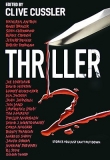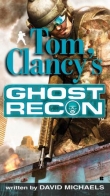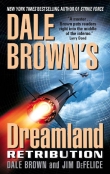
Текст книги "Ghost Fleet: A Novel of the Next World War"
Автор книги: P. Singer
Соавторы: August Cole
Жанр:
Триллеры
сообщить о нарушении
Текущая страница: 31 (всего у книги 37 страниц)
USS Zumwalt Ship Mission Center
“Twenty-six missiles incoming, sir,” said Richter with the kind of detachment that often accompanies extreme fear. “ATHENA shows Port Royal counterfiring.”
While not of the same design, the Port Royal was a sister ship of sorts to the Z. She had been the youngest of the navy’s Ticonderoga-class cruisers, and one of the first with the ability to shoot down ballistic missiles as part of the Navy’s Linebacker program. But in 2009, when it ran into a coral reef about a half a mile from the Honolulu airport, the ship earned a new, cruel nickname. The Port Coral, as it became known, didn’t sink, but the extensive damage to the ship’s hull, propellers, and sonar dome put the U.S. Navy’s then youngest cruiser on the target list for early retirement to the Ghost Fleet.
The Port Royal fired a wave of SM-3 air-defense missiles that sped upward from the vertical launchers embedded in its deck. The missiles arced up and then pitched down toward the low-flying cruise missiles. A wave of Seasparrow defensive missiles followed.
The collisions were almost instantaneous, showering the ocean surface with flame, fuel, and metal shards.
“I count that as fourteen hit, sir. We have twelve still incoming,” said the sailor.
“Full countermeasures and launch the Utah,” said Simmons.
A large metal canister that had been affixed to the Zumwalt’s stern separated from the ship with a loud bang. It popped thirty feet into the air and then dropped into the water with an anticlimactic splash, bobbing up and down.
Vern, who had been out on the deck checking a power-cable connection during a lull in the rail-gun fire, stopped to watch as the massive gray form the Z was leaving behind began inflating.
Mike ran up to her yelling, “We need to get back inside!”
Vern gave him a puzzled look and then returned her attention to the growing form, the words USS Utah unfurling on its side in white paint as it inflated. “What is it?”
“Now, Vern, move!” Mike half carried her roughly back to the shelter of the main superstructure. He steered her below decks and talked at the same time, occasionally pausing to catch his breath. “USS Utah was an old World War One battleship. By the time of the first Pearl Harbor attack, it had been turned into a floating naval target ship for our own gunners to practice on. But when the Japanese attacked in ’41, their pilots saw what looked from above like a real battleship. The old Utah was sunk, but not before she soaked up a ton of bombs that the enemy could have used on other, better targets. Our Utah is supposed to do the same.”
As they descended deeper into the ship, the matte-gray bag behind the Z continued to expand until it formed the silhouette of a small warship, with metallic reflective squares on it enhancing its signature. With a jerk, the towline finally paid out a quarter mile behind the ship, and the Utah now followed the Zumwalt, matching its speed.
“Sir, ATHENA says the incoming missiles are selecting targets. Twenty seconds out,” said the sailor in the mission center.
“ATHENA, full autonomous mode! Authorization Simmons, four, seven, Romeo, tango, delta,” said Simmons quickly.
The ship’s laser-point defense fired first. There was no noise or visible light and only faint, almost delicate movements as the solid-state, high-energy laser fired. It was a moment of faith for the crew, as the weapon lacked the certainty of gunpowder. The ship’s laser-gun camera showed a small flame spark on the target as the hundred-kilowatt beam came into contact with it. The missile caught fire and sank into the water. Then ATHENA automatically directed it to track and fire on a second missile.
At the same time, two Metal Storm computerized machine-gun turrets on the Zumwalt’s port and starboard sides came out of sleep mode. The weapons started to move back and forth, tracking the incoming cruise missiles with what looked like a predator’s patience. Then they locked targets and fired. The brief electronic zipping sound the guns made when they fired was as anticlimactic as it was effective; thousands of bullets shot out all at the same instant.
The Russian Zvezda KH-31 missiles were programmed to feint and dodge as they flew just above the ocean surface in order to complicate a defense’s firing solution. That tactic was of no use against the Metal Storm, as the missiles flew right into what was almost literally a wall of bullets.
“Seven missiles left,” said the tactical action officer.
“Activate Utah’s radar beacon,” said Simmons.
The remaining seven missiles’ ramjets kicked in, accelerating them to nearly three times the speed of sound as they closed on the task force, flying just fifty feet above the rippling sea surface.
As another missile was plucked away by a laser fire, the missiles broke formation like a startled flight of birds. Their targeting program picked out the largest ships in the task force. Two missiles vectored off toward the Zumwalt; two turned for the USS New York, a twenty-five-thousand-ton amphibious transport dock ship; two homed in on the USS America.
Aboard the Zumwalt, the Metal Storm turrets zip-fired again, and one of the incoming missiles turning toward the America disappeared with a spray of shrapnel.
Simmons held his headset mike close to his mouth with one hand and braced himself against the railing of the ship mission center’s second story with the other, looking at the sailors below him. “All hands, all hands. Incoming missiles, prepare for impact.”
As the two missiles sped toward Zumwalt, one appeared to twitch. It broke off and slammed into the Utah, the missile’s electronic brain registering what a human brain would have felt as satisfaction when it found its supposed target. The decoy ship exploded with a massive eruption of air and water.
The second cruise missile stayed true to its targeting-software designer’s intent. It made a final course correction and then enveloped the Zumwalt in a bloom of orange flame. The explosion rocked the ship, sending a shock wave through the mission center and tossing the captain over the center’s railing.
When he came to, Simmons found himself on the lower level of the ship mission center. He pulled himself up by the arm of the radar operator’s chair. Richter reached over and gave him a hand and then turned back to her screens. His back ached, but otherwise he seemed fine. Less so the room. Two of the wall screens had fallen off their mounts, one hitting the tactical action officer, who looked to have a broken collarbone. Acrid smoke made Simmons’s eyes water.
“Somebody get the air back on,” he shouted. He looked for Cortez. He had been beside him a second ago, but now he was gone.
“XO! Damage report!” said Simmons.
The air started to clear in the room as the fans switched on, but the stink of fire and plastic remained. If they made it through, they were going to smell like this for weeks, Simmons mused.
“EV system back online, sir,” called Cortez. He tracked the ship’s self-diagnostics on his glasses. “Working on the damage report.”
The voice came from the room’s upper deck. Simmons raced back up the steps and saw Cortez kneeling, helping a sailor into his chair.
Cortez stood, straightened his glasses, and gave Simmons the battle-damage update as far as he knew it. The missile warhead had detonated just fore of the superstructure. The good news was all the fires were contained to the impact site, and ATHENA, propulsion, and radar were online.
The rest was bad news. The only operative external camera showed smoke and flame shrouding the ship’s forward superstructure, blackening the whole surface. The laser turret on that side had evidently popped out of its mount before it settled back into place. The shock of the explosion had knocked loose power cables across the ship.
“Damage-control team is already on the way,” he said. “Fire-bots and ship’s suppression system are operative.” Two more of the monitors flickered back on as more of the ship’s external cameras rebooted. The faces of both officers fell at the images.
The New York listed over on its port side, almost at a forty-five-degree angle to the water’s surface. The image zoomed in on the two smoldering holes in the sides of its hull, which were sucking more and more water into the bowels of the ship, dragging it down. Sailors leaped from the superstructure into the flaming waters around it, only to disappear as the ship rolled over on top of them.
Better off was the America, but not by much. The missile had apparently gone into the opening of its elevator lift. A delicate-looking mushroom cloud hung above the hole ripped in its flight deck. Secondary explosions from aviation fuel stored below punched jets of flame out into the air. Yet for all the smoke and fire, the ship looked steady in the water.
“How many?” said Simmons.
“New York had already disembarked most of their Marines, so ATHENA is reporting five-hundred-plus KIA or missing. America, another eight hundred and twenty-five. Those numbers will change as data updates,” Cortez replied softly.
“I meant our ship,” said Simmons.
“System shows seven dead, twenty-two wounded,” said Cortez. “Four missing.”
“My dad?” asked Simmons, lowering his voice. He squinted, suppressing something he did not want to feel now, or ever.
“No, sir. He’s registering as active with the damage-control team below decks,” said Cortez, placing his glasses on top of his head, transfixed by the sight of the hull of the now-capsized New York slipping under the waves.
Simmons didn’t allow himself to feel any relief at the news. He gripped the railing until the tendons in his hands surrendered to the pain. The discomfort cleared his head and focused his attention.
“Helmsman, move us over parallel to the America,” said Simmons. “They’re going to need our help fighting those fires.”
USS Zumwalt, Below Decks
Mike followed the caterpillar-like fire-bot down the smoky passageway, knowing it would lead him to where he was needed most.
“Hit it over there,” he heard Davidson say, his voice muffled through a smoke hood. Already the blaze was nearly under control. Brooks wielded an extinguisher, spraying foam and coolant on the seared metal and melted composite. Davidson gave the Mohawked kid a thumbs-up, the kind of silent compliment that meant the most to the young man. The fire-bot scooted ahead and detonated its fire-retardant-chemical payload near the Russian missile’s impact point.
As the smoke cleared, daylight from the irregular oval hole in the deck above them punched through with a spotlight’s intensity. Mike had Brooks spray the walls again, and he climbed up carefully to put his head through so he could see the deck-side damage. The missile appeared to have struck as the ship rolled, which deflected its blast skyward, not into the hull. The heat, though, had seared the entire superstructure, melting the composite material into something that looked more like cooled lava than the creased lines of the radar-deflecting design. He took in the wider view beyond, the Z edging closer to the burning USS America, two of its fire hoses spraying toward it. Mike looked down and spotted a figure splayed out on a litter being rushed somewhere by another sailor and a corpsman. It was Parker; the big sailor was crying as he tried to move a blackened arm. Mike rested his head on his forearm briefly, suddenly fatigued, and then began to climb down.
“Superstructure’s all melted to shit,” said Mike, pulling off his smoke hood. Davidson did the same, coughing slightly. Brooks left his hood on.
“Take off your hood, Brooks, surgeon general’s orders. It’s not the smoking that’s going to kill you today,” said Mike, inhaling deeply.
Brooks reluctantly pulled the hood off and blinked bloodshot eyes.
Mike turned to Davidson. “We need to seal and reinforce that material up there; if we get into any kind of seas, it’s going to get wet down here fast.”
“When’s that going to happen?” said Davidson. “Chinese missiles don’t care about whatever sea state we’re in.”
“No,” said Mike. “But I do. Take care of the ship, and it’ll take care of you. You should know that by now.”
“We can slap some epoxy and Kevlar ply up there, then brace it. Sound good?” asked Davidson, digging in his right ear, trying to clear it.
“It’ll do,” said Mike. “Your ears okay?”
Davidson nodded and said, “Everything’s tinny-sounding. But don’t worry, Chief, I can still hear you if you need to chew my ass out.”
The radio slung over Mike’s right shoulder started to squawk. “Chief? This is the captain,” his son said, as if he needed to identify himself to his own father. “What’s your status? Over.”
“I’m okay, but we’re counting multiple wounded, mainly burns and broken bones and burst eardrums. We’ve got a hole about twelve foot wide and some fire and heat damage. You can kiss whatever stealth signature we had goodbye. Fortunately, the missile didn’t dig too deep. No structural damage that I can see. Main laser turret is going to need some major repair hours to get back into alignment, but we look to still be in business with the rail gun. I’ve got a damage-control party working on the hole. It’s above the water line, but I want it sealed up.”
“Thank you, Chief. I knew I could count on you,” his son said. Mike could hear the relief in his voice, and he wasn’t sure whether it was for him or for the role he was filling. Today, either would do.
USS Zumwalt Ship Mission Center
Captain Simmons felt a tap on his shoulder: Cortez letting him know they had finally gotten the link to the task force command network back up.
The video image filled the display screen, and Jamie looked at a grim-faced officer, Commander Alexander Anderson. Years ago, when he and Jamie were both just out of ROTC, they had served together onboard the USS Chafee. Anderson now had command of the Port Royal, which had pulled to the other side of the America and was adding the water from its fire hoses to help beat down the flames.
“Jamie, it’s good to see you in one piece,” said Anderson. The officer had a slim face and narrow shoulders, and his uniform always looked slightly oversize. It was as if any extra calories his body had went to fueling his legendary brain.
“Same here,” said Simmons. “Ship’s holding together. Crew too. We’re still in the fight. Any word from Admiral Murray?”
“She’s gone, sir,” said Anderson, shifting back to a formal tone now that he saw his old friend was unhurt. “Confirmed by the America’s quartermaster, a petty officer who seems to be all that’s left in command there. Reports all power out. She had to yell over to us with a bullhorn.” He paused. “Captain Simmons, you know what this means. If that petty officer is right, and we have to assume she is, at this point… with Admiral Murray dead, and Captain Brookings on the America…”
“I’m task force commander…” Simmons said, realizing what Anderson was saying.
“Yes, sir,” said Anderson. “Longboard is yours. We’re in good hands, I know it.”
The two of them went silent for a few seconds as the moment sank in, and then they turned to business.
“With your permission, sir, I’d like to begin evacuating the America’s crew.”
Simmons nodded even as he was trying to make up his mind.
“I don’t like the idea of scuttling a ship still afloat,” Anderson continued, “but I like the idea of towing a forty-thousand-ton weight with an enemy fleet coming in behind us even less.”
Simmons finally realized what Anderson assumed their next course of action would be.
“We are not leaving behind either America or the Marines onshore,” said Simmons. “We will evacuate the wounded off the ship, but hold this line of position until our main fleet or the enemy’s arrives, whichever happens first.”
Anderson shifted slightly sideways, as if he did not quite believe what he was seeing and hearing. His eyes squinted and his brow wrinkled in what Simmons recognized was an eloquent objection forming, the kind of argument they might have had back in the Chaffee’s wardroom when they were young officers. Then the look washed away, and Anderson nodded with an exaggerated bob of his head.
“Yes, sir,” he said.
“We have to locate the enemy,” said Simmons. “It’s that simple. I’m ordering Orzel out on picket duty and deploying all our Fire Scouts to maximum range. And God help us if they don’t find what’s out there coming for us.”
Vicinity of USS America, Pacific Ocean
He’d been close to greatness, thought Denisov. And yet now here he was, wondering whether he should try to take off his flight boots for added buoyancy. He slowly kicked his legs, knowing he was too far offshore to do anything but drift until something ate him or one of the American ships in the near distance plucked him from the water.
He lay back against the collar of his inflated life vest, watching the strange, thin, wedge-shaped American drones circle high overhead. They were now flying a combat air patrol against an airstrike that wouldn’t come. “I was it, you stupid abtomat, there’s no more!” he screamed. Mindless machines, but lethal; he had to give them that.
A tingling at the back of his neck made him spin around. Seen from thousands of feet in the air, the Pacific looked inviting. But floating in it, he thought these waters were as dark and foreboding as his worst nightmare. Something was nearby, he could feel it.
An enormous black shape slowly moved through the sea maybe thirty yards beneath him. It surfaced a few hundred feet away, puffed a blast of air, and then went back under. No shark could be that big. He sighed with relief. A humpback whale, perhaps, content to eat krill, not Russian pilots.
He was alone for a little while longer. He was close enough to see the still-smoking USS America, and he was confident the little aircraft carrier had been the one his missile had hit. He watched the chiseled form of a massive destroyer pull alongside it; sailors appeared to be tethering the ships together. He recognized it as a Zumwalt-class ship and decided instead that had been the one his missile had hit; far better to have hit the more exotic creature with his last shot.
With his eyes stinging from the salt and sun, Denisov watched the litters of wounded men and women being passed off the burning America via ziplines strung between the two vessels. The sailors were bound up like mummies as they traveled from their dying ship to another with an uncertain future.
From the stern of the strange-looking ship, three small forms lifted off. When they formed up, he identified them as MQ-8 Fire Scout drones, scaled-down helicopters with pinched noses that looked like they had never made it out of aviation adolescence. Another two lifted off from the ship tethered to the other side of the America; some kind of cruiser or destroyer, he couldn’t tell.
The drone helicopters paused in formation and then each set off in a different direction, looking like a foraging steel wasps. They flew low, hugging the waves. One of the Fire Scouts flew almost directly overhead, the drone oblivious to Denisov as the force of its rotor’s downdraft pushed him under the waves. At that moment, Denisov realized that maybe the Americans wouldn’t come for him.
USS Zumwalt Ship Mission Center
The tactical holograph still hadn’t come back on, so the fuzzy image was carried across the entire bank of monitors on the wall. Given how the holographic projectors seemed to get knocked offline in every fight, Simmons wondered why they even bothered with the finicky high-tech contraptions. The grainy image they were watching looked like one of those old low-resolution YouTube videos.
“Sir, the task force is a mix of Chinese and Russian ships,” said the Zumwalt’s intelligence officer. “And ATHENA agrees, based on the EM signatures the Fire Scout is picking up.”
The live image kept shaking as if somebody were swatting at the drone, but the shaking was only the drone’s autonomous-flight software keeping the rotorcraft as low as possible to the waves, dipping into the troughs between them for cover.
“Freeze that for me,” said Simmons. The image on the screen locked, and the officer zoomed in on the superstructure of a large ship that the long-range camera had picked up on the upward ride of a wave.
“What a beast. That’s gotta be the Zheng He.”
“Yes, sir. Looks like it,” said the intelligence officer. He moved the still image of the massive Chinese capital ship off to one screen and resumed the live camera view. The video feed began to jiggle and shake, and the Fire Scout picked up speed, giving up its cover, as the wind shifted and the troughs of the waves grew shallow. It was a panic move, the robot’s algorithms having run out of good options to evade detection.
The shaking image then showed a series of smoky trails lifting up from the task force and flying toward the camera.
“Uh-oh” was all the intelligence officer could say before the image blanked out.
Cortez spoke up, reading from his glasses, as Simmons watched the replay of the Fire Scout’s frantic final moments.
“Between the visuals and SIGINT collection, ATHENA is reporting it as seven surface ships: three Sovremenny-class anti-surface destroyers, two Type Fifty-Four frigates, one Luyang-class guided missile destroyer, and a battle cruiser, most likely the Admiral Zheng He. They’re making twenty-five knots. They’re likely coming at us off a loose fix they got from the air attack.”
Simmons took in the small amount of information he had and realized he needed to think like an admiral and consider the entire Longboard task force, not just his own ship.
“But where are their carriers?” said Simmons out loud, mostly to himself.
“No further information, sir,” said Cortez. “ATHENA can run some models to guess where they are, but it’ll essentially be throwing the same darts at the wall as we are.”
“We’ll take what we can get. We need to hit that task force while we can. Release Puffin batteries,” said Simmons.
Cortez barked out the orders. The lines linking them to America were fed out to give space between the two ships. Then the deck hatches for the Zumwalt’s vertical launch cells all flipped up simultaneously, revealing a line of dark openings, each twenty-eight inches wide. One after another, a series of thirteen-foot-long cruise missiles, eighty in total, popped out from the vertical launch cells, like untethered jack-in-the-boxes.
Originally known as the Naval Strike Missile, the Puffin was a stealthy replacement for the old Penguin missile. Though it flew under the speed of sound, the Norwegian-designed missile could evade radar detection and had a range of more than 180 miles, which made it lethal, especially when fired in great numbers.
The missiles seemed to hang in the air for an instant as their solid-fuel rocket boosters ignited, and then they arced off into the sky. When their boosters burned out, they were jettisoned in a rain of metal that bombarded the water below. The missiles then raced through the sky powered by turbojet engines that took them at just over five hundred miles per hour to the general vicinity of the Fire Scout’s last known location. Each Puffin then began autonomously hunting, using its own imaging infrared seeker to match anything it saw against an onboard database of authorized targets.
It was a ship’s wake that gave the enemy’s fleet away. A Puffin missile at the far end of the spread detected the faint V-shaped lines of white foam on the ocean surface and began to circle in the area. An FL-3000 Red Banner short-range air-defense missile rose up to knock it down, but not before the Puffin had shared its data with the rest of the flock and beckoned them to join in.
One by one, the other missiles began to converge on the area. Three more Puffins were sacrificed to defensive missiles, establishing the perimeter of the task force’s defenses. The robotic swarm then circled, just out of range, with machine patience as more and more missiles joined. While they waited, though, the task force below fired off its own volley of cruise missiles at the Puffins’ point of departure.

![Книга [Magazine 1966-07] - The Ghost Riders Affair автора Harry Whittington](http://itexts.net/files/books/110/oblozhka-knigi-magazine-1966-07-the-ghost-riders-affair-199012.jpg)






